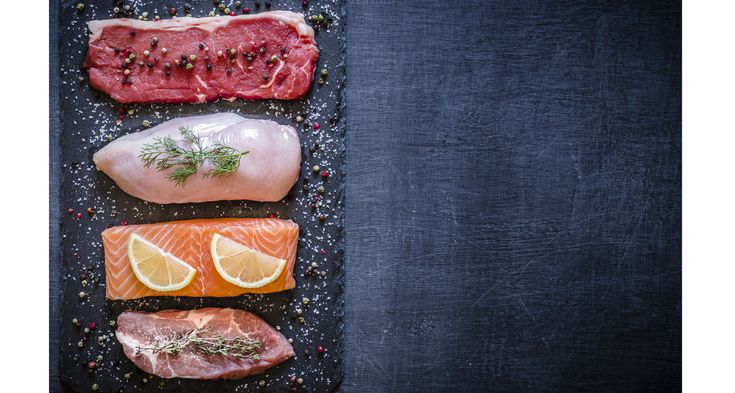Lists of zero-calorie foods abound on the internet. And that’s not surprising. The idea of eating without gaining weight is alluring, especially if you’re trying to reach or maintain a healthy body size. But could it be true — are there really foods with zero calories?

“The answer is ‘sort of,’” said Kimberly Spatola, registered dietitian at Novant Health Heart & Vascular Institute in Elizabeth. “But, a more accurate term would be ‘extremely low-calorie foods.’”
And it’s probably not surprising that most of these foods are fruits and vegetables. They may have a few calories, but the number is negligible.
Don’t let that fool you, though. These foods pack a real nutritional punch on their own. And adding them to meals, along with lean protein and nourishing calorie-dense foods (like eggs, nuts and avocados, which contain heart-healthy fats) can improve your overall health.

We’re here to help with weight
Struggling to lose weight? Want help with healthier eating? Or maybe you need a hand with Type 2 diabetes? Novant Health doctors and other specialized clinicians are ready to help.
- CoreLife: CoreLife Novant Health offers you a way to get to a healthy weight and address medical conditions that keep you from living the life you want.
- Bariatrics and weight-loss surgery: Click here to reach team members who will contact you to discuss your needs or schedule an appointment.
- Registered dietitians help us make smart choices. Find one today.
- Diabetes: Whether you are trying to prevent diabetes, learning how to live with it, Novant Health is here to help.
- Primary care clinicians: Not sure where to start? Schedule an appointment to begin the journey.
What benefits do extremely low-calorie foods offer?
While the term "zero-calorie foods" may not be technically accurate, it would take large quantities of these options to have a measurable impact on your weight. So eating more of them can be helpful if you’re trying to lower your weight.
“Most of these foods also have a high water content and abundant dietary fiber, so they’ll satisfy your appetite and help you feel full longer,” Spatola explained. “Plus, fruits and vegetables contain important vitamins, minerals, phytonutrients and, in some cases, probiotics, so they support your health in many ways.”
More good news: Research shows eating more of these foods can help prevent cardiovascular disease, cancer, diabetes, Alzheimer’s disease and other illnesses.
“So, while these are not literally zero calorie foods — because there’s no such thing — they are low enough in calories and high enough in nutrition to warrant a very large place on your plate,” she said.
What are calories?
Calories are units of energy, which is present in nearly everything we eat and drink. Our bodies use this energy to grow, heal and support everyday functions like your heartbeat, breathing and metabolism.
So even if you’re trying to lower your weight, it’s important to make sure you’re getting the calories your body needs. Adult women are likely to require between 1,600 and 2,400 calories a day, and men 2,200 and 3,000, according to the Dietary Guidelines for Americans 2020-2025.
“Foods vary in the amount of calories they contain,” Spatola said. “For example, nuts, avocados and olive oil are naturally higher in calories because they contain heart-healthy fats. We need to eat those calorie-dense items as well as lower-calorie foods to help us feel satisfied and to support our overall health.”
20 extremely low-calorie foods to try
- Apples
- Pears
- Berries
- Peaches
- Watermelon
- Citrus fruits (oranges, lemons, grapefruit, etc.)
- Red, yellow, orange and green bell peppers
- Zucchini
- Cucumber
- Celery
- Greens (collard, kale, lettuce, spinach, etc.)
- Broccoli (and other cruciferous vegetables, like Brussels sprouts, cabbage, cauliflower)
- Onions (and other aromatic vegetables, like chives, garlic and leeks)
- Sauerkraut
- Dill pickles (with no added sugars)
- Kimchi
- Unsweetened beverages (black coffee, tea, sparkling waters)
- Clear broth
- Herbs and spices (pepper, cinnamon, turmeric, rosemary, fresh basil etc.)
- Low- or no-sugar condiments (prepared mustard, hot sauce, salsa, vinegar)
How to include more extremely low-calorie foods in your eating plan
Adding more of these foods throughout your day doesn’t have to be complicated. Start slowly, and gradually increase the number in snacks and meals.
“Over the course of a few weeks, you’ll find these healthier foods nudging out less nutritious options almost effortlessly,” Spatola said. “And in today's world — where figuring out how to live healthfully and conveniently can be challenging — that’s pretty magical.”
To help you get started, Spatola offered the following ideas:
- Create flavored water by chilling it in a pitcher with slices of lemon, oranges or cucumbers.
- Freeze grapes and blueberries for an easy summer treat.
- Snack on cucumber slices with a couple of tablespoons of your favorite hummus.
- Whip up a smoothie (like the one below) for a midmorning refresher.
- Boost your breakfast by adding spinach, peppers, and other veggies to scrambled eggs or omelets.
- Experiment with roasting or grilling fruits and vegetables to intensify their flavors (and keep some on hand to add to your favorite dishes).
Lentil salad with feta, tomatoes, cucumbers and olives
Salad:
- 3 cups cooked brown lentils (low-sodium canned lentils are fine)
- 1 pint multicolored cherry tomatoes, halved
- 1 1/2 cups chopped English (seedless) cucumber
- 1/2 cup pitted Kalamata olives, coarsely chopped
- 1/2 cup thinly sliced red onion
- 1/2 cup crumbled feta cheese
- 1/4 teaspoon salt
- 1/4 teaspoon ground pepper
Dressing:
- 3 tablespoons red-wine vinegar
- 1 tablespoon finely chopped shallot (or substitute yellow onions)
- 1/2 teaspoon minced garlic
- 1/2 teaspoon honey
- 1/4 cup extra-virgin olive oil
- 1/4 teaspoon salt
- 1/4 teaspoon ground pepper
Preparation:
- In a large bowl combine cooked or canned lentils, tomatoes, cucumber, olives, onion, feta, salt and pepper. Set aside.
- Whisk vinegar, shallot, garlic, honey, salt and pepper in a small bowl. Gradually whisk in oil until well combined.
- Stir the dressing into the lentil mixture. Serve immediately or cover and refrigerate for up to five days.
Nutrition per serving (recipe yields 6 servings): 236 calories; 23 grams carbohydrates (5 grams sugars, 7 grams dietary fiber); 10 grams protein; 12 grams fat (3.5 grams saturated); 179 milligrams sodium.
Adapted from: https://www.eatingwell.com/recipe/7899362/lentil-salad-with-feta-tomatoes-cucumbers-olives/
Greener green tea fruit smoothie
Ingredients:
- 2 cups unsweetened frozen fruit (preferably peaches and pineapple)
- 1 cup raw baby spinach
- 1 cup cold unsweetened green tea
- 1 tablespoon honey
- 1 tablespoon lemon juice
Preparation:
Combine fruit, spinach, tea, honey and lemon juice in a blender. Blend until smooth and frothy. Divide between two glasses and serve immediately.
Nutrition per serving (recipe yields 2 servings): 124 calories; 31 grams carbohydrates (30 grams sugars, 1.5 grams dietary fiber); 1.5 grams protein; 1 gram fat (0.5 grams saturated); 26 milligrams sodium.
Adapted from: https://www.eatingwell.com/recipe/248475/green-tea-fruit-smoothie/










